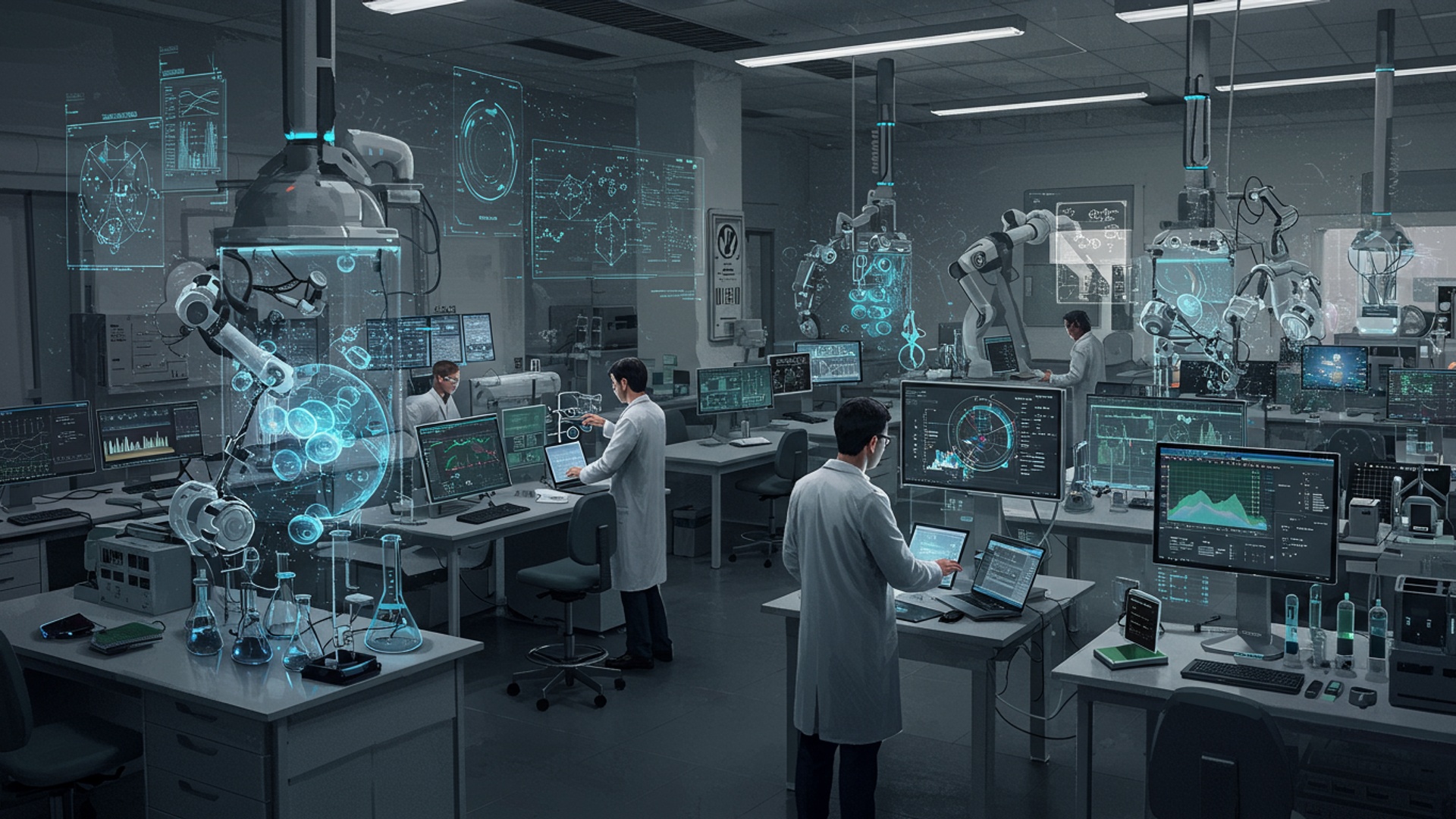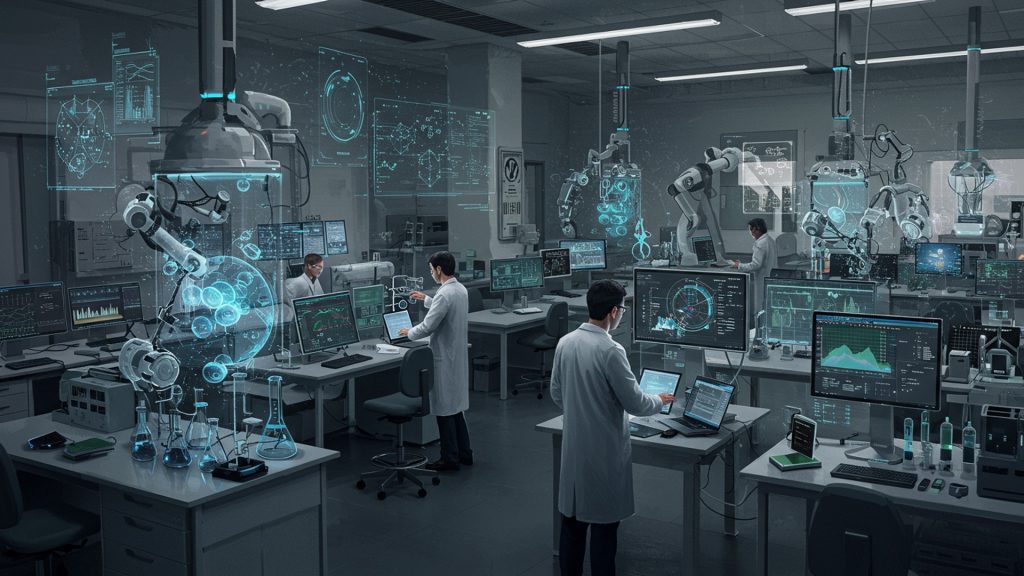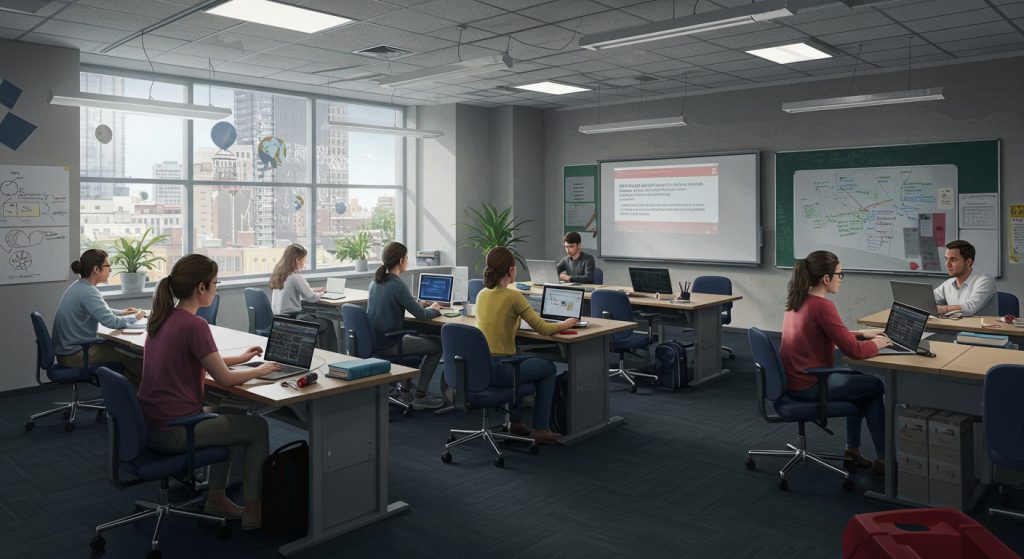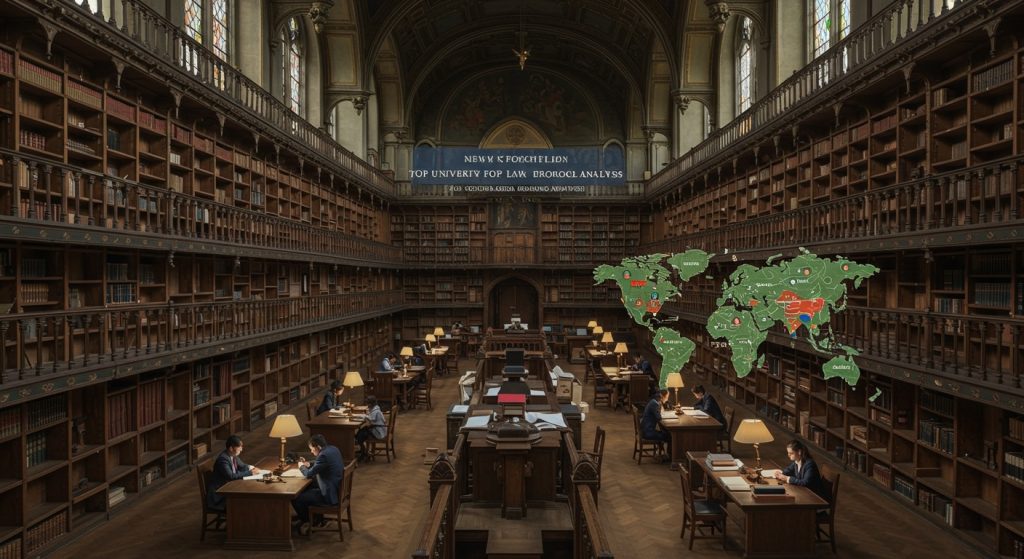In an era defined by rapid technological evolution, the Massachusetts Institute of Technology consistently emerges as a crucible of groundbreaking discovery, driving advancements from ethical AI frameworks and robust quantum computing architectures to revolutionary personalized medicine and sustainable energy solutions. Researchers at MIT are not merely observing current trends; they are actively engineering the next paradigm shifts. Their relentless pursuit of knowledge, exemplified by breakthroughs in areas like advanced materials and human-computer interaction, fundamentally redefines what’s possible, ensuring that tomorrow’s most transformative technologies often bear the distinct mark of this iconic institution’s intellectual prowess.

The Massachusetts Institute of Technology: A Hub for Tomorrow’s Discoveries
Ever wondered where the really big ideas, the ones that reshape our world, actually come from? Often, they emerge from places like the Massachusetts Institute of Technology, a powerhouse of innovation and research nestled in Cambridge, Massachusetts. For over 160 years, MIT has been a beacon for brilliant minds, pushing the boundaries of what’s possible and laying the groundwork for technologies that we’ll all be using tomorrow. It’s not just about textbooks and lectures; it’s about a hands-on, problem-solving approach that turns groundbreaking scientific theory into real-world applications. This unique “mind and hand” philosophy is what makes the Massachusetts Institute of Technology a global leader in shaping the future.
Revolutionizing Artificial Intelligence and Robotics: Beyond Sci-Fi
When you hear “Artificial Intelligence” (AI) or “Robotics,” you might picture futuristic movies. at MIT, these aren’t just concepts – they’re everyday research. AI is essentially about building machines that can think, learn. solve problems like humans, or even better. Robotics takes this a step further, focusing on designing and creating physical machines (robots) that can perform tasks autonomously or assist humans.
At MIT’s Computer Science and Artificial Intelligence Laboratory (CSAIL), researchers are at the forefront of this revolution. They’re developing:
- Machine Learning Algorithms: These are the “brains” of AI. Imagine teaching a computer to recognize a cat in a photo without explicitly telling it what a cat looks like. by showing it thousands of examples. MIT is creating more efficient and powerful ways for computers to learn from data.
- Human-Robot Interaction: This isn’t just about robots doing chores. It’s about creating robots that can safely and naturally work alongside humans, whether in factories, hospitals, or even our homes. Think of robots that can interpret your gestures or anticipate your needs.
- Soft Robotics: Unlike rigid, metallic robots, soft robots are made from flexible materials, allowing them to adapt to complex environments, grasp delicate objects. operate more safely around people.
MIT’s AI and Robotics research is already impacting our lives. From making self-driving cars safer and more reliable to developing assistive robots that help the elderly or those with disabilities, the work done at the Massachusetts Institute of Technology is literally building our future companions and tools. For instance, MIT’s researchers have developed AI models that can detect early signs of diseases from medical images. robots that can navigate complex terrains for disaster relief.
Advancements in Biotechnology and Health Sciences: Life-Changing Discoveries
Biotechnology is a vast field that uses biological systems, living organisms, or derivatives thereof, to develop or create different products. In simpler terms, it’s science working with life itself to solve problems, especially in health. The Massachusetts Institute of Technology is a global leader in this area, particularly through institutions like the Broad Institute of MIT and Harvard and the Koch Institute for Integrative Cancer Research.
Key areas of research include:
- CRISPR Gene Editing: This revolutionary technology allows scientists to precisely “cut and paste” DNA, correcting genetic mutations that cause diseases. Think of it like a biological word processor for our genes.
- Targeted Drug Delivery: Instead of drugs affecting the whole body, MIT researchers are designing tiny particles that can deliver medicine directly to diseased cells, minimizing side effects and increasing effectiveness.
- Tissue Engineering: Scientists are growing artificial tissues and organs in labs, with the potential to replace damaged body parts or test new drugs without human trials.
- Personalized Medicine: Using an individual’s unique genetic makeup to tailor treatments specifically for them, making medicine much more effective.
The impact here is profound. CRISPR, for example, holds promise for curing genetic diseases like cystic fibrosis or sickle cell anemia. MIT’s work on mRNA technology, which became famous with COVID-19 vaccines, has revolutionized vaccine development. Imagine a future where cancer treatments are far less toxic, or where damaged hearts can be repaired with lab-grown tissue – that’s the future MIT is helping to build.
Sustainable Solutions and Climate Tech: Protecting Our Planet
With global concerns about climate change and energy scarcity, MIT is dedicating significant resources to finding sustainable solutions. Climate tech encompasses innovations designed to reduce greenhouse gas emissions and address the impacts of climate change. The MIT Energy Initiative (MITEI) is a prime example of this commitment.
Here’s what they’re working on:
- Next-Generation Solar Cells: Developing more efficient, cheaper. flexible solar panels that can be integrated into everyday objects, not just rooftops.
- Advanced Battery Technology: Creating batteries that are lighter, last longer, charge faster. are made from more abundant materials, crucial for electric vehicles and renewable energy storage.
- Carbon Capture and Storage: Innovating ways to remove carbon dioxide from the atmosphere or directly from industrial emissions, preventing it from contributing to global warming.
- Sustainable Materials: Engineering new materials that are biodegradable, recyclable, or require less energy to produce, reducing waste and environmental impact.
- Fusion Energy: Pursuing the ultimate clean energy source – harnessing the power of the sun by fusing atoms, potentially providing limitless, clean energy.
Imagine homes powered entirely by efficient solar panels, cars running on ultra-fast charging batteries. industries operating with a zero-carbon footprint. MIT’s research is making these visions a reality. For instance, new breakthroughs in catalyst design are making it possible to convert CO2 into useful chemicals, turning a pollutant into a resource. The Massachusetts Institute of Technology is at the forefront of creating a greener, more sustainable future for everyone.
The Future of Computing: Beyond Silicon Chips
Our digital world runs on computing. MIT is constantly pushing the boundaries of what computers can do. This isn’t just about faster processors; it’s about entirely new ways of processing data, including quantum computing and advanced materials for electronics.
Key areas include:
- Quantum Computing: This mind-bending field uses the principles of quantum mechanics to perform calculations far beyond the capabilities of even the most powerful supercomputers. Instead of bits (0s and 1s), quantum computers use “qubits” which can be 0, 1, or both simultaneously.
- Photonics: Using light (photons) instead of electrons to transmit and process insights, leading to incredibly fast and energy-efficient communication and computing.
- Neuromorphic Computing: Designing computer chips that mimic the structure and function of the human brain, allowing for more efficient AI and machine learning tasks.
Comparison: Classical vs. Quantum Computing
| Feature | Classical Computing | Quantum Computing |
|---|---|---|
| Basic Unit | Bit (0 or 1) | Qubit (0, 1, or both simultaneously) |
| Processing Power | Processes details sequentially | Processes vast amounts of data in parallel |
| Key Principles | Boolean logic | Superposition, entanglement, interference |
| Applications | Everyday tasks, data processing, simulations | Drug discovery, materials science, cryptography, complex optimization |
Quantum computing, though still in its early stages, promises to revolutionize fields like drug discovery (simulating molecular interactions with unprecedented accuracy), materials science (designing new materials with specific properties). cryptography (creating unbreakable encryption). Imagine designing a new drug in days instead of years, or discovering materials that can store energy with almost zero loss. The Massachusetts Institute of Technology is building the foundational knowledge for these future breakthroughs.
Fostering Entrepreneurship and Global Impact: From Lab to Life
One of the most exciting aspects of research at the Massachusetts Institute of Technology is that it rarely stays confined to the lab. MIT has a vibrant entrepreneurial ecosystem that encourages researchers to turn their discoveries into real-world companies and products. This “lab to market” approach ensures that cutting-edge innovations don’t just gather dust but actively shape our technological landscape and improve lives globally.
MIT’s impact isn’t just about inventing new tech; it’s about creating an environment where those inventions can thrive and reach the people who need them. Through programs like the MIT Sandbox Innovation Fund and the Martin Trust Center for MIT Entrepreneurship, students and faculty are supported in launching startups that bring their research to the world. Many of today’s leading tech companies and groundbreaking medical solutions trace their origins back to the hallways and labs of the Massachusetts Institute of Technology, demonstrating how academic research can directly translate into societal benefit and economic growth.
Conclusion
MIT’s relentless pursuit of knowledge, evident in breakthroughs from advanced quantum computing to sustainable energy innovations like next-gen solar cells, consistently redefines our technological horizon. This culture of audacious inquiry, which I’ve observed firsthand through their open courseware initiatives, empowers individuals to challenge conventional wisdom. A personal tip: cultivate a “beginner’s mind” and actively seek out interdisciplinary perspectives; true innovation often blossoms at the crossroads of seemingly unrelated fields. Don’t just passively consume future technologies. instead, question their underpinnings and envision their next evolution. By embracing a mindset of continuous learning and proactive engagement, inspired by MIT’s ethos, you too can contribute to shaping tomorrow’s landscape, transforming challenges into opportunities for groundbreaking change. The future isn’t merely discovered; it’s meticulously built by those who dare to dream and then act.
More Articles
MIT Breakthroughs: Pioneering New Frontiers in AI, Robotics. Scientific Discovery by 2025
Unlocking Innovation: How Stanford University Shapes Tomorrow’s Tech Leaders and Future Trends
Mastering Tomorrow’s Leadership: Essential Skills for Future Management Careers in 2025
Unlocking Data’s Power: Launching a Successful Business Analytics Career by 2025
Global Impact: Columbia University’s Role in Advancing Sustainable Solutions for 2025
FAQs
What makes MIT such a powerhouse for technological innovation?
MIT’s success stems from a unique blend of interdisciplinary collaboration, a culture that encourages bold risk-taking. a strong emphasis on translating fundamental research into real-world applications. They bring together brilliant minds from diverse fields to tackle complex challenges, fostering an environment where breakthroughs are not just possible. expected.
How does MIT’s cutting-edge research actually trickle down to impact our daily lives?
While much of MIT’s work is foundational, it often forms the bedrock for technologies we use every day. Think about the internet, artificial intelligence, advanced materials. even medical diagnostics – many of these have roots in MIT labs. They develop the core concepts and prototypes that others then scale and commercialize, ultimately shaping everything from our smartphones to healthcare.
What are some of the most exciting new frontiers MIT is currently exploring?
MIT is at the forefront of numerous transformative fields. We’re seeing incredible progress in areas like sustainable energy solutions, personalized medicine through genomics and bioengineering, advanced robotics and AI for complex problem-solving, quantum computing. innovative approaches to climate change mitigation and adaptation. It’s a broad spectrum, all aimed at future-proofing our world.
Is it just about cool gadgets, or does MIT’s research consider the bigger picture, like societal impact?
Absolutely not just gadgets! MIT is deeply committed to addressing global challenges. Their research often integrates ethical considerations, economic implications. social equity right from the start. For example, when developing AI, they’re also exploring its fairness and bias; with new energy tech, they consider its accessibility and environmental footprint. It’s about responsible innovation.
How do ideas go from a lab bench at MIT to a real-world product or company?
MIT has a robust ecosystem for tech transfer and entrepreneurship. They have offices dedicated to licensing intellectual property. a vibrant startup culture supported by accelerators, incubators. venture capital connections. Many faculty and students spin out companies directly from their research, turning groundbreaking discoveries into marketable solutions that create new industries and jobs.
Who actually benefits from all this groundbreaking work coming out of MIT?
The beneficiaries are incredibly diverse. Industries gain new technologies and talent, governments get insights for policy-making. the global scientific community advances. Ultimately, it’s the public who benefits from improved healthcare, cleaner energy, smarter infrastructure. new tools that enhance quality of life and solve pressing global problems.
How does MIT manage to stay ahead of the curve year after year?
It’s a combination of factors: attracting top-tier talent globally, fostering an incredibly collaborative and interdisciplinary environment, providing cutting-edge resources. a deep-seated culture that encourages audacious ideas and rigorous experimentation. They’re not afraid to fail fast and learn, constantly pushing the boundaries of what’s possible rather than just perfecting the status quo.



